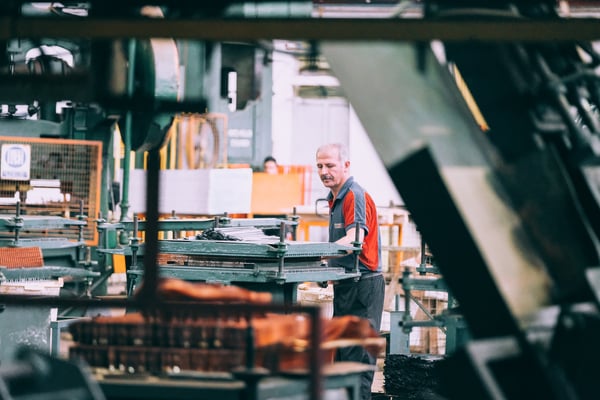
Getting the right hinge for your commercial or industrial product relies on having a trusted and reliable hinge manufacturer. Enter cellular manufacturing.
Cellular manufacturing allows companies to reduce costs and lead time and quickly produce components, whether they are low or high volume. The quicker the manufacturing process, the sooner you can get your product out to customers.
What is Cellular Manufacturing?
Cellular manufacturing involves the set-up and sequence of workstations and equipment in the production line.
Often shaped in a "U" pattern, workstations are designed to make small lots in a continuous flow sequence. Instead of relying on two or three large machines or workstations in different plant buildings, similar machines and stations are nearby.
Once the specific production process is completed in one cell, the product moves on to the next station without returning to the previous workstation. It should take the same amount of time to finish the work in each cell.
Cellular manufacturing offers an efficient process because once the item leaves the cell, the workers and equipment now focus on producing the next part.
Cellular manufacturing is based on Kaizen line methods where lean manufacturing techniques focus on making continuous, uniform improvements on upstream or downstream processes.
Cellular Manufacturing | Advantages and Disadvantages
Cellular manufacturing is popular with manufacturers all over the world, not just heavy-duty hinge manufacturers. The advantages of cellular manufacturing include:
- Quicker product turnaround
- Lower overhead costs
- Less in-process inventory
- Short setup time for part variations
The amount of flexibility that cell manufacturing offers makes it ideal for either high or low-volume manufacturing.
Resource: Want to learn how our heavy-duty industrial hinges could improve your next project? See how our hinges stack up here:
Disadvantages of Cellular Manufacturing
More workers can be added to the cell based on the volume or complexity of a project. However, there’s a saturation point where too many people can clog up the production line process, decreasing efficiency.
There has to be a balance between the number of workstations required to match the product volume without introducing waste in operational processes that increases costs.
Adding a parallel production line solves this problem, doubling the output in the same amount of time. This solution comes at a cost, however. Adding more cells means a lot of capital investment in equipment and manufacturing space.
Most manufacturers, including automobile and appliance industries, use cellular manufacturing techniques. Yet it may not be suitable for all industries as some processes require more time than others or are specialized.
Stainless steel refrigerator doors and high-end grills with welded corners or hand brushed steels exemplify non-cell manufactured parts. The products are pulled out of the production line and sent off to workers. This method can cause variable completion times and increase costs, so it’s more helpful for high-end products.
Why Hinge Manufacturers Should Use Cellular Manufacturing
Cellular manufacturing is one of the smoothest and fastest methods for making hinges. This process can accommodate small and large orders while helping reduce costs.
Need 100 hinges? One worker would be capable of working the line until the end product is complete. Need 1000 hinges? Additional workers can be added to match throughput or decreased to meet the order size.
At Weber Knapp, our cellular manufacturing lines are dedicated to product assembly. This allows us to quickly move inventory out the door once all the individual pieces are manufactured.
Hinge manufacturing companies can lower waste and more effectively control inventory costs with cellular manufacturing.
The Capabilities of a Hinge Manufacturer
There are many advantages of cellular manufacturing. Knowing more about the hinge manufacturing processes can help you understand how to get the highest quality parts while fitting a budget and a deadline.
To learn more about what hinge manufacturers are capable of, check out our machining page!
(Editor's note: This article was originally published in November 2020 and was recently updated.)
.png?width=12000&height=2033&name=WeberKnappLogo_white%20(1).png)



